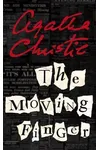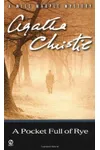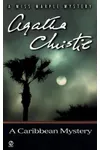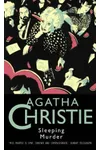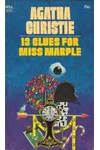Step into the cozy yet cunning world of Miss Marple, where a sharp-eyed spinster solves crimes with wit and wisdom! Agatha Christie’s beloved detective series blends classic whodunits with the charm of English village life, proving that even the quietest corners hide the darkest secrets. From her armchair in St. Mary Mead, Miss Jane Marple unravels mysteries that stump Scotland Yard, making her one of literature’s most enduring sleuths.
With her knack for spotting human flaws and her deceptively gentle demeanor, Miss Marple invites readers into a thrilling game of cat-and-mouse. Whether you’re a mystery buff or new to Christie’s world, her stories offer timeless intrigue and clever twists that keep you guessing until the final page.
How Miss Marple Began
Agatha Christie introduced Miss Jane Marple in 1927 with a short story, later expanding her debut in the 1930 novel The Murder at the Vicarage. Inspired by Christie’s own observations of village life and her fascination with human nature, Miss Marple was a fresh take on the detective archetype—an elderly, unmarried woman whose unassuming presence belied her razor-sharp mind. Unlike the flamboyant Hercule Poirot, Marple’s strength lay in her quiet insight, drawing parallels between crimes and the gossip of St. Mary Mead.
Christie, already a bestselling author, crafted Marple as a counterpoint to the male-dominated detective genre, giving readers a heroine who thrived on intuition and experience. Over decades, the series grew to include 12 novels and 20 short stories, cementing Marple’s place in mystery fiction.
The Heart of Miss Marple
The Miss Marple series shines through its clever plots and vivid settings, with key books showcasing her brilliance. The Murder at the Vicarage (1930) introduces St. Mary Mead, where a vicar’s murder sparks Marple’s first case, revealing her knack for untangling lies. A Murder Is Announced (1950) sees Marple solve a chilling crime advertised in a local paper, blending suspense with social commentary. 4:50 from Paddington (1957) follows her investigation of a murder witnessed on a passing train, highlighting her relentless curiosity. Finally, Sleeping Murder (1976), Christie’s last Marple novel, explores a haunting cold case, showcasing Marple’s timeless appeal.
The series’ themes delve into human nature—greed, jealousy, and deception—set against the idyllic yet deceptive backdrop of rural England. Marple’s method, rooted in observation and analogy, reflects Christie’s fascination with psychology, while her village setting grounds the stories in a relatable world. The prose is crisp and accessible, with twists that reward careful readers, making each book a masterclass in classic mystery.
St. Mary Mead itself is a character, its quaint facade masking secrets that Marple exposes with her unerring instinct. This blend of cozy charm and grim reality gives the series its unique flavor, appealing to fans of both light and gritty crime tales.
Why Miss Marple Resonates
Miss Marple’s legacy transcends the page, influencing mystery writers and captivating generations of readers. Her character challenged stereotypes, proving that age and gender are no barriers to brilliance. The series’ adaptations—films, TV shows, and radio dramas—have brought Marple to new audiences, with actresses like Joan Hickson and Angela Lansbury embodying her quiet strength. Fans cherish her as a symbol of understated power, a reminder that wisdom often hides in plain sight.
Today, Miss Marple remains a cultural icon, her stories reissued in countless editions and translated worldwide. Her appeal lies in her universality—anyone, anywhere, can relate to her sharp-eyed take on human folly, making her mysteries as fresh now as they were nearly a century ago.
- First appearance: 1927 (short story), 1930 (novel)
- Total works: 12 novels, 20 short stories
- Setting: St. Mary Mead, England
- Notable adaptations: BBC’s Miss Marple (1984–1992)
Ready to meet the sleuth who sees it all? Grab The Murder at the Vicarage and dive into Miss Marple’s captivating world of mystery!


